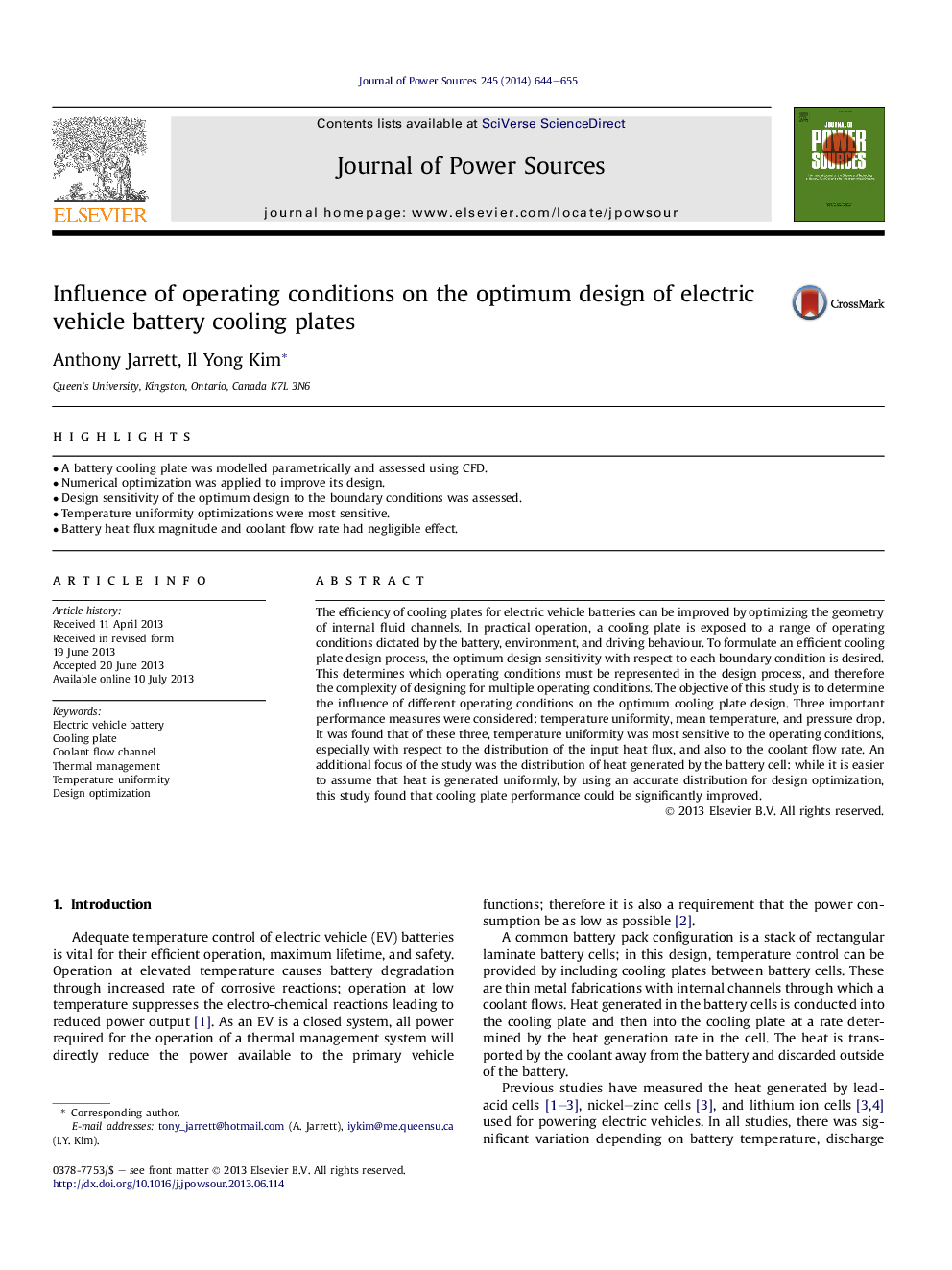| Article ID | Journal | Published Year | Pages | File Type |
|---|---|---|---|---|
| 7739503 | Journal of Power Sources | 2014 | 12 Pages |
Abstract
The efficiency of cooling plates for electric vehicle batteries can be improved by optimizing the geometry of internal fluid channels. In practical operation, a cooling plate is exposed to a range of operating conditions dictated by the battery, environment, and driving behaviour. To formulate an efficient cooling plate design process, the optimum design sensitivity with respect to each boundary condition is desired. This determines which operating conditions must be represented in the design process, and therefore the complexity of designing for multiple operating conditions. The objective of this study is to determine the influence of different operating conditions on the optimum cooling plate design. Three important performance measures were considered: temperature uniformity, mean temperature, and pressure drop. It was found that of these three, temperature uniformity was most sensitive to the operating conditions, especially with respect to the distribution of the input heat flux, and also to the coolant flow rate. An additional focus of the study was the distribution of heat generated by the battery cell: while it is easier to assume that heat is generated uniformly, by using an accurate distribution for design optimization, this study found that cooling plate performance could be significantly improved.
Keywords
Related Topics
Physical Sciences and Engineering
Chemistry
Electrochemistry
Authors
Anthony Jarrett, Il Yong Kim,
